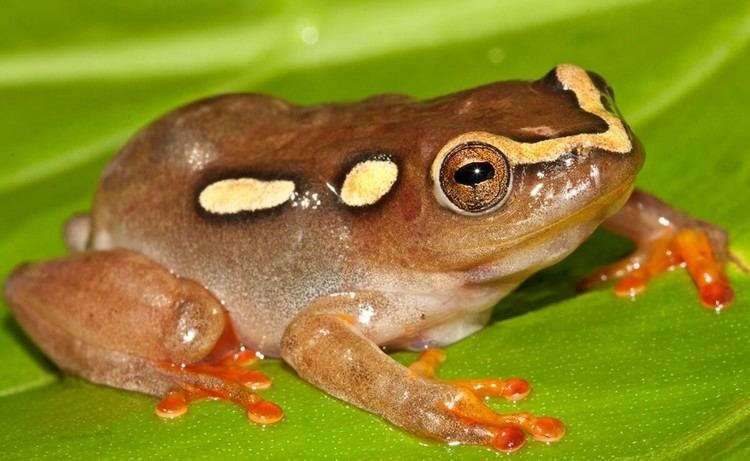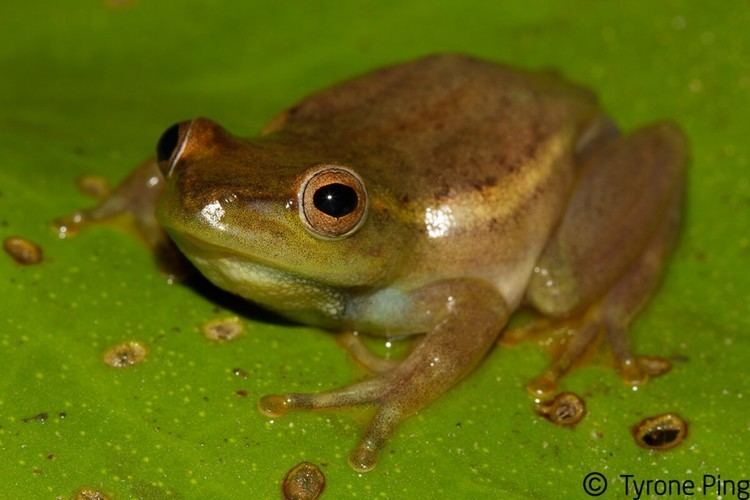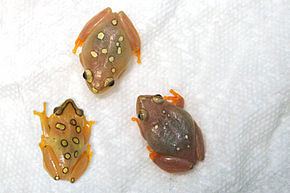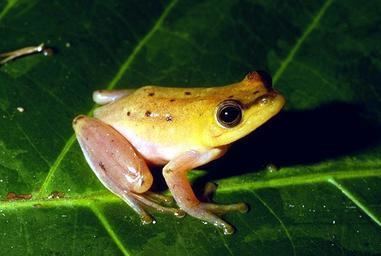Order Anura Higher classification Hyperolius | Phylum Chordata Scientific name Hyperolius argus Rank Species | |
 | ||
Similar Hyperolius, Frog, Amphibians, Hyperolius puncticulatus, Hyperolius mitchelli | ||
Hyperolius argus
Hyperolius argus, known under common names Argus reed frog, Argus sedge frog, and Boror reed frog (and many others) is a hyperolid frog found in the eastern coastal plain of Africa from southern Somalia through Kenya, Tanzania, Mozambique, Malawi, Zimbabwe to KwaZulu-Natal in eastern South Africa.
Contents

Description

Hyperolius argus is sexually dichromatic: adult males are usually green, and females usually reddish-brown with large white spots. The coloration and pattern show geographic variation.

Both females and males metamorphose to a solid green color without spots—the color of adult males. Under experimental conditions, the time from metamorphosis to the change to a female color pattern took about two months; for a male, the time from metamorphosis to the development of vocal sacs, with spontaneous vocalization and aggression, was about three months.

The females attach the eggs to vegetation below the surface of the water (possibly caused by raising water level). The female can lay in total about 200 eggs in clusters of about 30 eggs.
Habitat and conservation

Hyperolius argus is a common species living near water in low elevation dense, humid savanna and grassland. Breeding takes place in vegetated shallow pans, vleis and marshes, typically in temporary water.

Even though this species does not face major threats, it is affected by urban expansion, agricultural intensification, and introduced species (bass).
